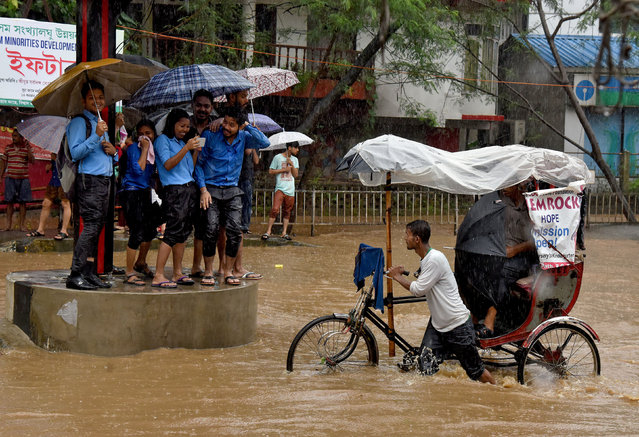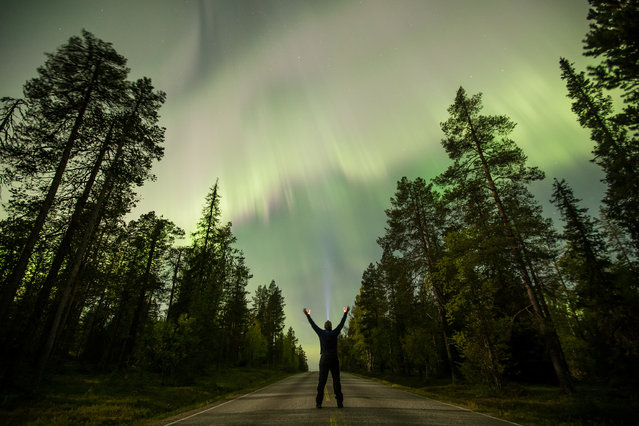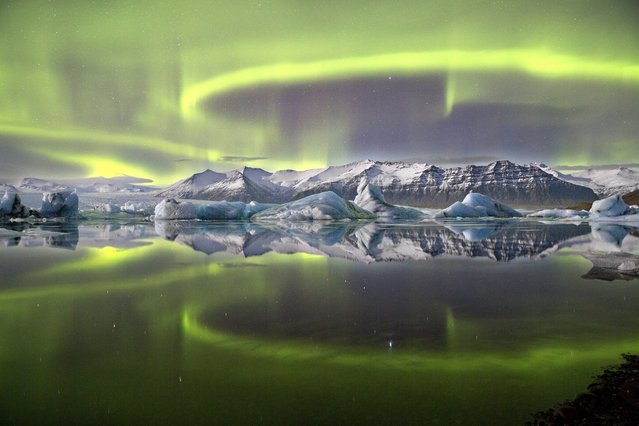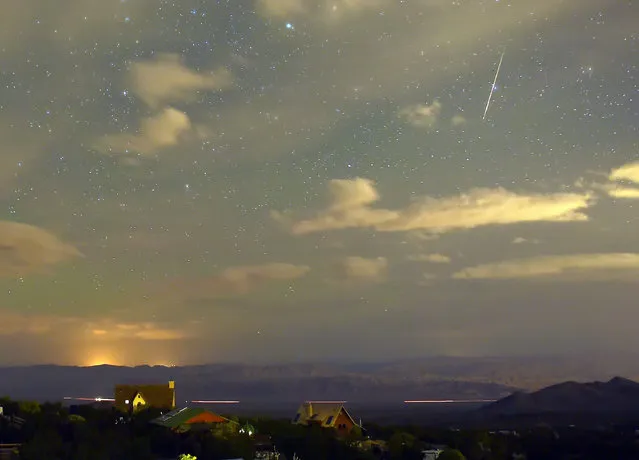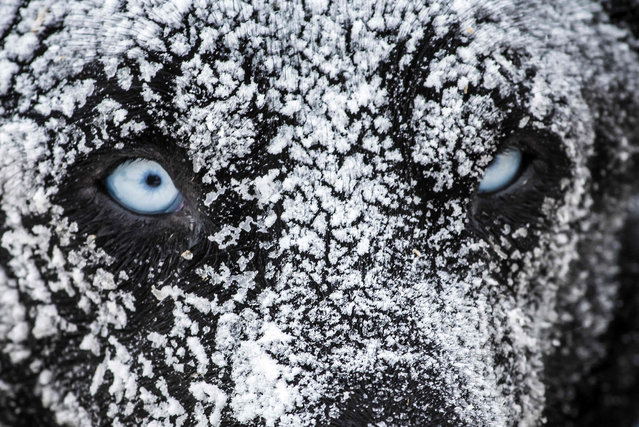
A sledding dog is covered in ice after spending the night in the open air with his musher at the polar base of Val-Cenis, as they ready for the next stage of the 12th edition of “La Grande Odyssee” sledding race across the Alps on January 17, 2016 in Val Cenis Lanslevillard. (Photo by Jean-Philippe Ksiazek/AFP Photo)
19 Jan 2016 08:05:00,post received
0 comments

